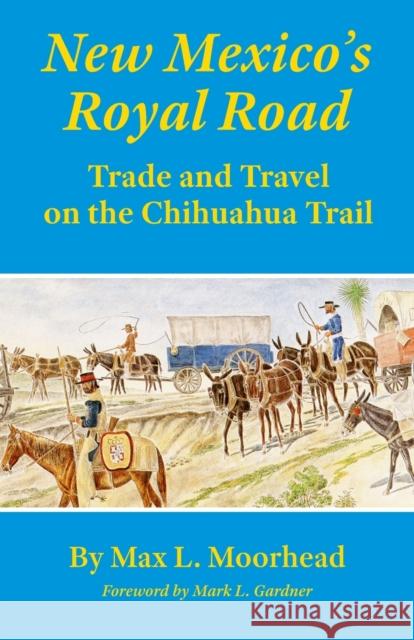New Mexico's Royal Road: Trade and Travel on the Chihuahua Trail » książka
New Mexico's Royal Road: Trade and Travel on the Chihuahua Trail
ISBN-13: 9780806126517 / Angielski / Miękka / 1995 / 256 str.
The arrival of Missourian William Becknell's party at Santa Fe in 1821 ushered in the era of the annual "Santa Fe trade" between the United States and the Mexican settlements to the south and opened the famous route known as the Santa Fe Trail. Of even greater significance, but largely overlooked today, is the fact that it also opened a road from the United States connecting with a major Mexican high way, for Santa Fe was the terminus of the 1,600-mile Camino Real, the "King's Highway," stretching southward to Chihuahua and the interior cities of Mexico. Over this Royal Road between Santa Fe and Chihuahua lumbered the caravans of the Santa Fe traders, who exchanged American dry goods and hardware for Mexican silver and mules. Over it, too, traveled Colonel Doniphan's Missouri Volunteers, bent on establishing the boundary of Texas at the Rio Grande. Indeed, without this main artery of travel, the history of both the United States and Mexico might have been vastly different. This book tells the exciting story of the Chihuahua Trail, of the volume and value of the frontier commerce, its peculiar trade practices, the risks of the road, and the government controls exercised by both countries. But, more than that, it tells of the traders themselves and their influence on the government and citizenry of New Mexico, an influence strong enough to destroy that province's will to resist when the Mexican War broke out in 1846, and of their role in the war and their importance in making New Mexico into an American territory. Max L. Moorhead was professor of history at the University of Oklahoma and editor of the Santa Fe trader Josiah Gregg's classic account COMMERCE OF THE PRAIRIES, published by the University of Oklahoma Press. Mark L. Gardner is the editor of BROTHERS ON THE SANTA FE AND CHIHUAHUA TRAILS: EDWARD JAMES GLASGOW AND WILLIAM HENRY GLASGOW, 1846-1848."
The arrival of Missourian William Becknells party at Santa Fé in 1821 ushered in the era of the annual "Santa Fé trade" between the United States and the Mexican settlements to the south and opened the famous route known as the Santa Fé Trail. Of even greater significance, but largely overlooked today, is the fact that it also opened a road from the United States connecting with a major Mexican high way, for Santa Fé was the terminus of the 1,600-mile Camino Real, the "Kings Highway," stretching southward to Chihuahua and the interior cities of Mexico.Over this Royal Road between Santa Fe and Chihuahua lumbered the caravans of the Santa Fe traders, who exchanged American dry goods and hardware for Mexican silver and mules. Over it, too, traveled Colonel Doniphans Missouri Volunteers, bent on establishing the boundary of Texas at the Río Grande. Indeed, without this main artery of travel, the history of both the United States and Mexico might have been vastly different. This book tells the exciting story of the Chihuahua Trail, of the volume and value of the frontier commerce, its peculiar trade practices, the risks of the road, and the government controls exercised by both countries. But, more than that, it tells of the traders themselves and their influence on the government and citizenry of New Mexico, an influence strong enough to destroy that provinces will to resist when the Mexican War broke out in 1846, and of their role in the war and their importance in making New Mexico into an American territory. Max L. Moorhead was professor of history at the University of Oklahoma and editor of the Santa Fe trader Josiah Greggs classic account COMMERCE OF THE PRAIRIES, published by the University of Oklahoma Press.Mark L. Gardner is the editor of BROTHERS ON THE SANTA FE AND CHIHUAHUA TRAILS: EDWARD JAMES GLASGOW AND WILLIAM HENRY GLASGOW, 1846-1848.











